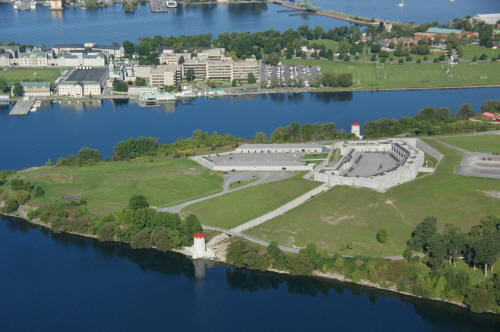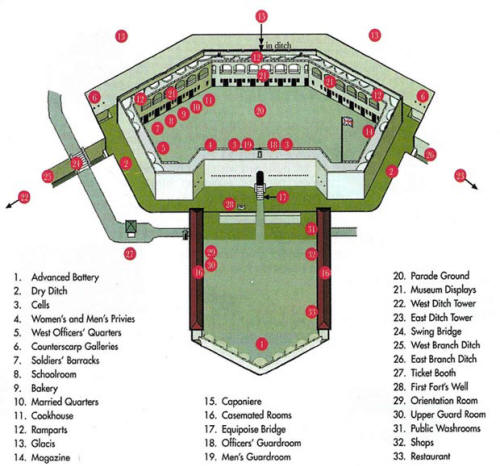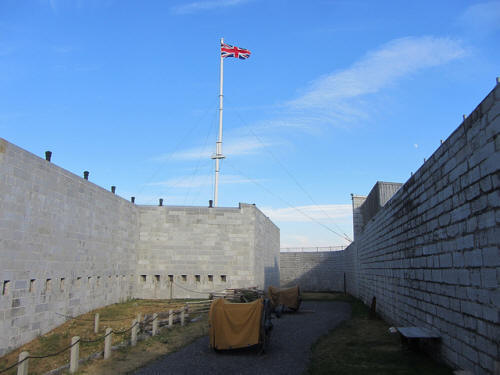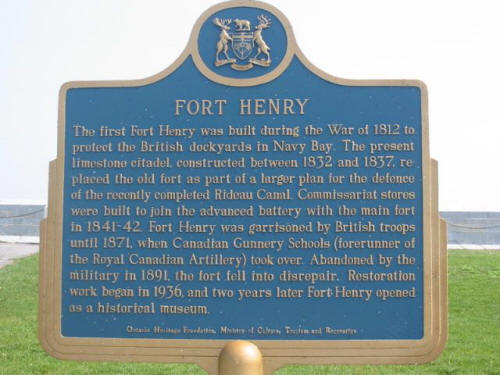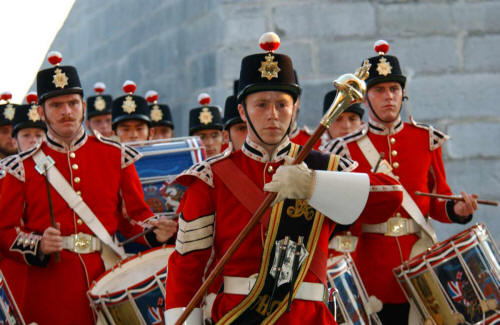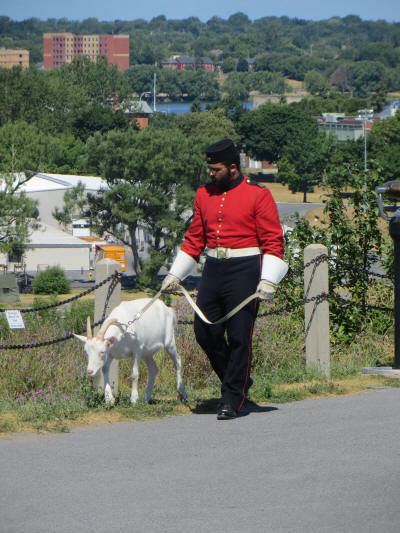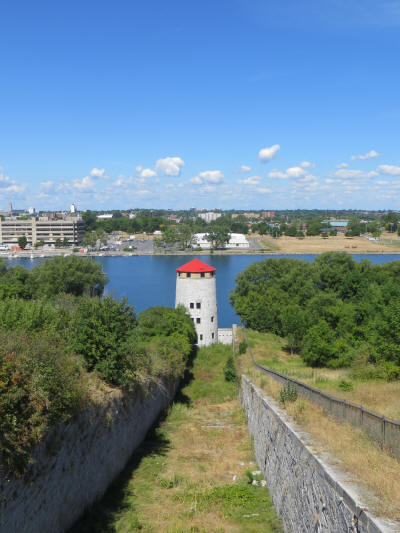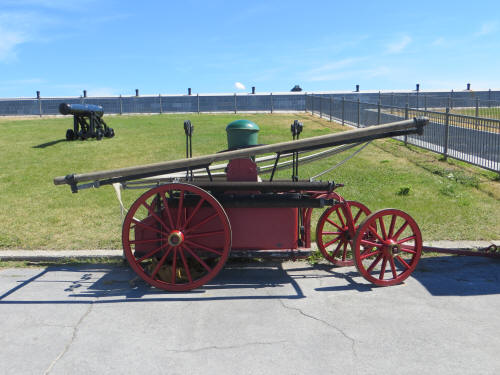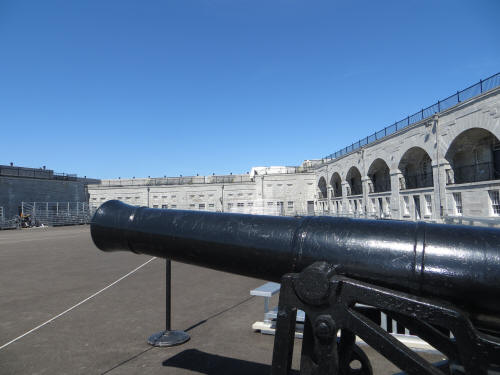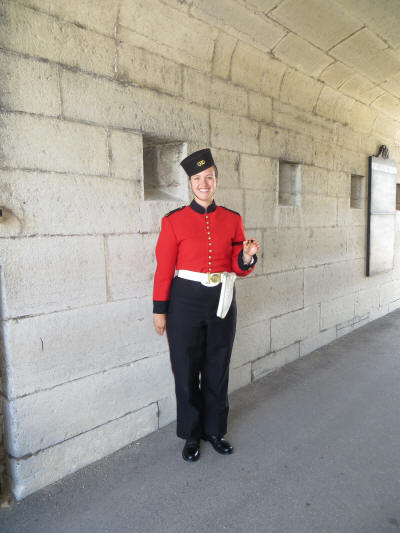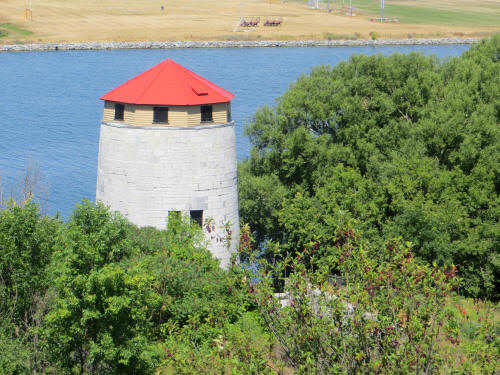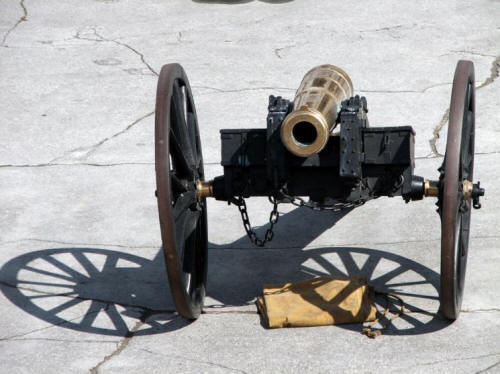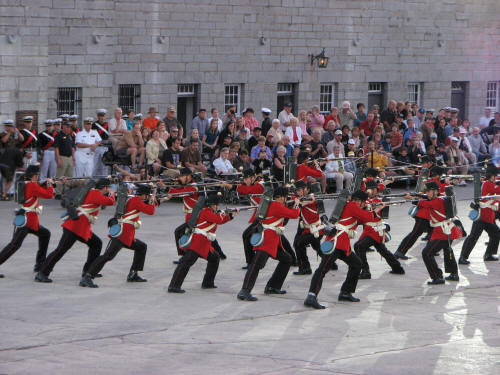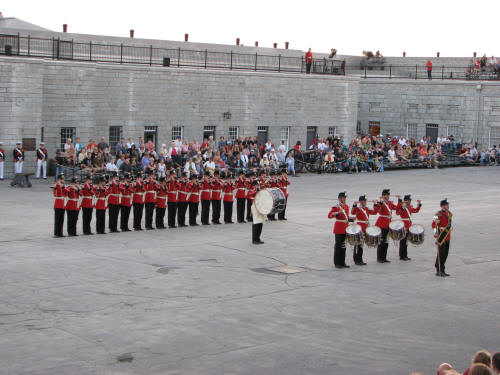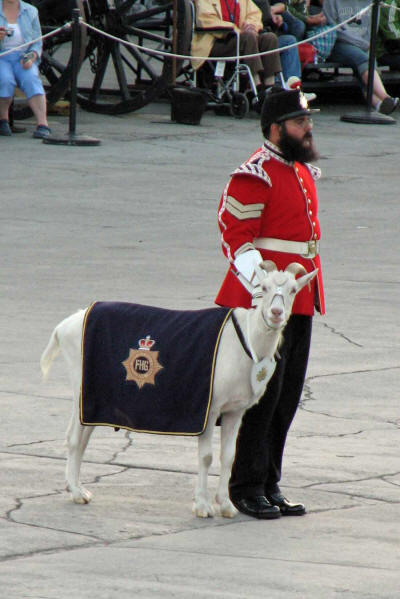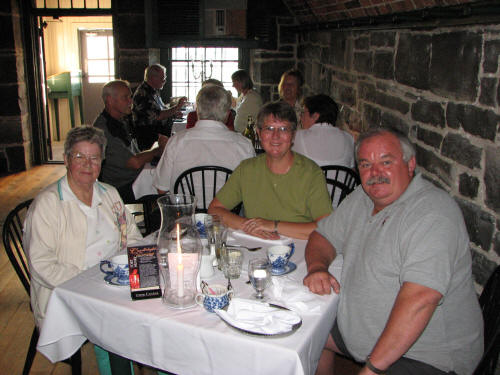The original Fort Henry was built during the War of 1812, between Great Britain and the United States of America. At the time Canada was a British Colony. During the War of 1812, the British anticipated an attack on Point Henry due to its proximity to the Royal Navy Dockyards (now the site of Royal Military College) and to the mouth of the St. Lawrence River. The loss of this vital trading route would have cut off communication between Kingston and everything to the east of the city.
The original fort bears no resemblance to what you see today; between 1832 and 1837 a second fort was built on the site of the first and this is this fort that guards our city today. It was considered even more necessary to fortify this point after the War of 1812, due to the completion of the Rideau Canal (built from 1826-32), placing Point Henry at the intersection of three important waterways: the Rideau Canal, the St. Lawrence River, and Lake Ontario. Fort Henry is the largest fortification west of Quebec city. The fort cost 70,000 British pounds sterling to build, the equivalent of $42,000,000 in today's dollars.
The fort was abandoned by the British Army in 1870, and was garrisoned by Canadian troops until 1891. The fort subsequently fell into disrepair until 1936. It was then restored under the direction of Ronald L. Way as a living history museum. The fort was first opened as a museum on the 1st of August 1938.


